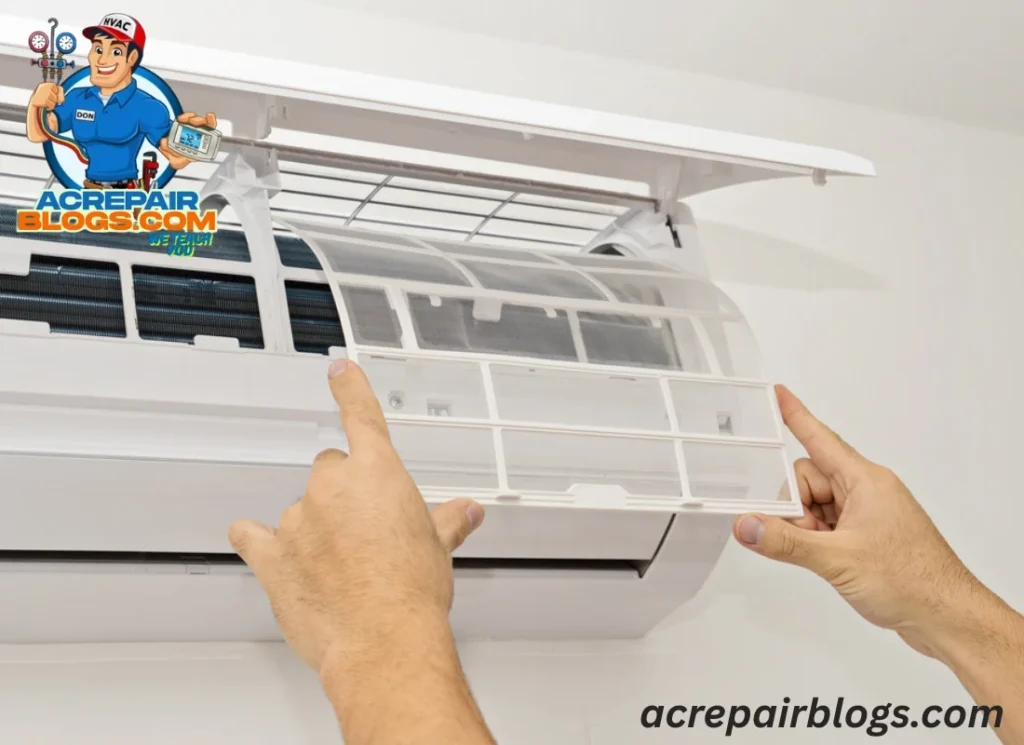How to Prevent Mold Growth in Your AC System
Introduction: Why Mold in Your AC is a Serious Problem
When you think about mold, you probably imagine damp basements or bathrooms. But did you know your AC system can be a prime breeding ground for mold? Dark, moist environments with limited airflow are perfect for mold spores to thrive. Once mold begins growing inside your air conditioner, spores can spread through your ductwork and circulate throughout your entire home.
Poor indoor air quality, musty odors, potential health risks, and costly repairs. The good news is, you do not have to wait until mold becomes a problem. With the right steps, you can stop it before it starts.
This air conditioner mold cleaning and prevention guide will walk you through how to prevent mold growth in your AC system naturally, the best ways to keep AC ducts mold-free, and simple maintenance strategies that protect your health and comfort.
Understanding Why Mold Grows in AC Systems
To prevent mold, it is important to understand why AC units attract it in the first place:
- Moisture buildup: Condensation from cooling creates damp conditions.
- Darkness: AC units and ducts are shielded from sunlight, giving mold an ideal hiding spot.
- Dust and debris: Organic matter provides food for mold spores.
- Poor ventilation: Limited airflow encourages stagnant, humid conditions.
Good knowledge of causes make easier to prevent damage.
How to Prevent Mold Growth in Your AC System Naturally
Natural prevention is related with smart maintenanace habits and routine cleaning. You do not always need harsh chemicals sometimes, the best solutions are simple.
1.Keep Humidity Levels Low
- Use a dehumidifier if indoor humidity exceeds 50%.
- Ensure your AC’s built-in dehumidification function is working properly.
2.Clean with Vinegar or Baking Soda
- Spray diluted white vinegar on drip pans or coils to kill mold spores naturally.
- Baking soda absorbs odors and prevents mold regrowth.
3.Improve Ventilation
- Open windows periodically to reduce stale indoor air.
- Run exhaust fans in bathrooms and kitchens to remove excess moisture.
4.Use a UV Light Purifier
- UV lights installed inside your HVAC system naturally kill mold spores, bacteria, and viruses.
- Natural solutions are effective, but prevention works best when paired with consistent system care.
Best Ways to Keep AC Ducts Mold-Free
Your AC ducts are like highways for air and unfortunately, also for mold spores if left unchecked. Here’s how to protect them:
- Regular Duct Cleaning: Schedule professional duct cleaning every 3 to 5 years, or sooner if you notice musty odors.
- Replace Air Filters Frequently: Change filters every 1 to 3 months to reduce dust and moisture.
- Seal Leaks: Leaky ducts allow humid air inside, creating mold growth conditions.
- Insulate Ducts: Proper insulation prevents condensation buildup inside ducts.
How to Stop Mold in AC Vents
Moldy AC vents not only spread spores but also signal deeper problems inside the system. Follow these steps:
- Turn Off the AC: Prevent spores from spreading while cleaning.
- Remove the Vent Covers: Scrub them with a vinegar-water solution or mild detergent.
- Vacuum Inside the Vent: Use a HEPA vacuum attachment to remove dust and mold traces.
- Apply an Antifungal Spray: Use a safe HVAC-approved product to prevent regrowth.
- Replace Old Vents: If vents are badly rusted or mold-infested, replacement is best.
Tips to Prevent Mold in Air Conditioner Drip Pans
The drip pan beneath your AC coil is one of the most common mold hot spots. To prevent problems:
- Empty and Clean the Pan Regularly: Especially during peak cooling season.
- Add a Few Drops of Vinegar: Creates an environment where mold struggles to grow.
- Ensure Proper Drainage: A clogged condensate line leads to standing water, which is mold’s best friend.
- Install Pan Tablets: HVAC-safe tablets dissolve slowly to prevent bacterial and mold growth.
Air Conditioner Mold Cleaning and Prevention Guide: Maintenance Checklist
Here’s a simple maintenance routine you can follow year-round:
- ✅ Change air filters every 1 to 3 months
- ✅ Inspect drip pans monthly during summer
- ✅ Wipe coils with vinegar solution seasonally
- ✅ Check ducts for leaks or condensation annually
- ✅ Schedule professional HVAC servicing twice a year
This proactive care ensures your AC runs efficiently while staying mold-free.
How to Improve Indoor Air Quality by Preventing AC Mold
The ultimate benefit of mold prevention is not just a clean AC system it is better indoor air quality. Here’s how preventing mold helps:
- Healthier Living: Mold spores can cause allergies, respiratory issues, and headaches.
- Fresher Air: Eliminates musty odors that can spread through vents.
- Energy Efficiency: A clean, mold-free system does not have to work as hard, saving on energy costs.
- Peace of Mind: verify the air quality improvement release stress.
Improving air quality is one of the most impactful steps you can take for your household’s health.
Common Mistakes to Avoid
While prevention is straightforward, many homeowners unintentionally make mold worse. Avoid these pitfalls:
- ❌ Using bleach on coils (it corrodes metal over time).
- ❌ Covering vents or restricting airflow.
- ❌ Ignoring water leaks around the AC system.
- ❌ Running the AC with dirty filters.
Conclusion
Mold growth in your AC system is not just inconvenient it is a serious threat to air quality and system performance. The good thing is that you can prevent it with continous care.
With help of air condition mold cleaning and prevention tips, apply them to mold in air conditioner and stop mold in AC duct, you will protect your health.
So, if you have ever wondered how to prevent mold growth in your AC system naturally or the best ways to keep AC ducts mold-free, the answer lies in simple habits: control moisture, clean regularly, and stay proactive.
